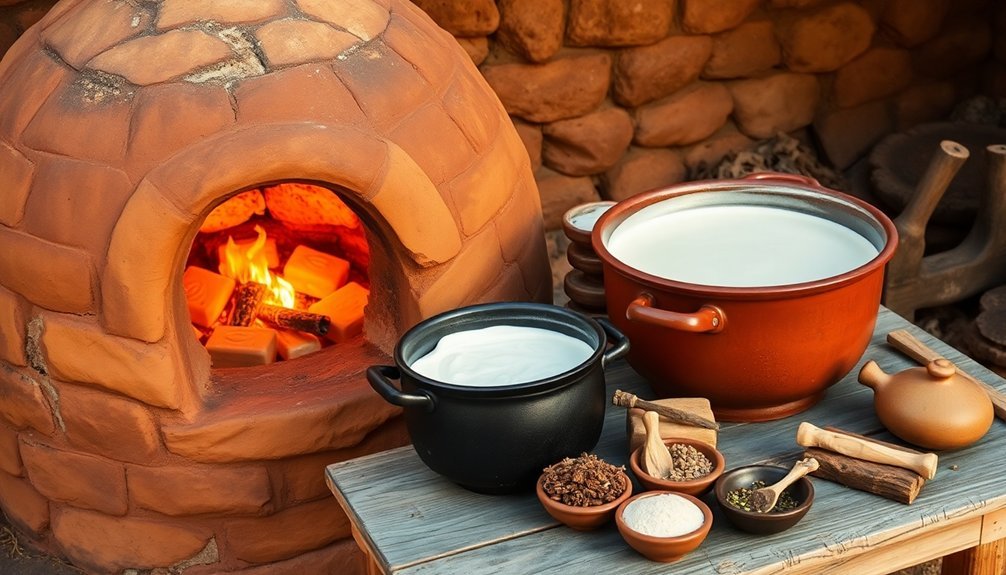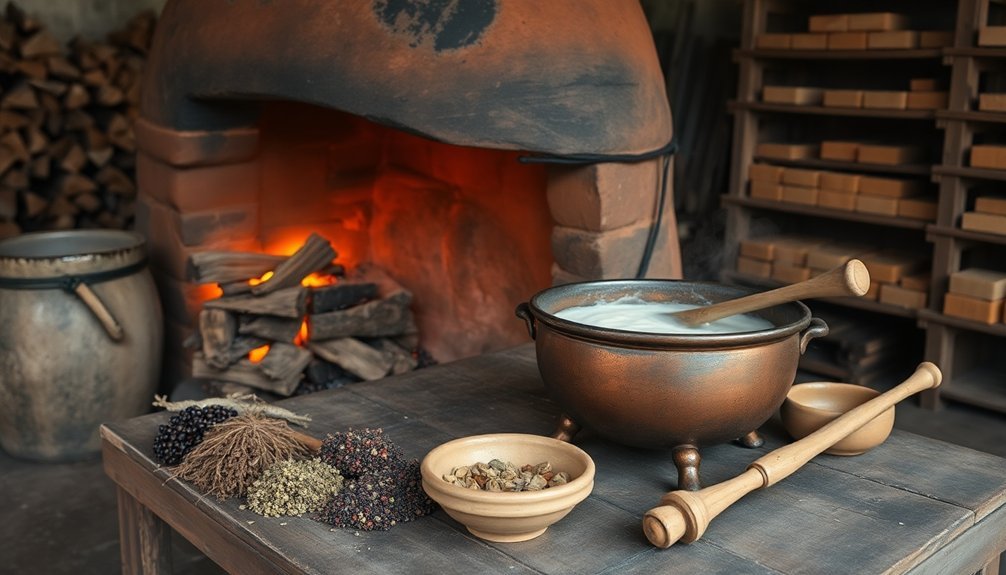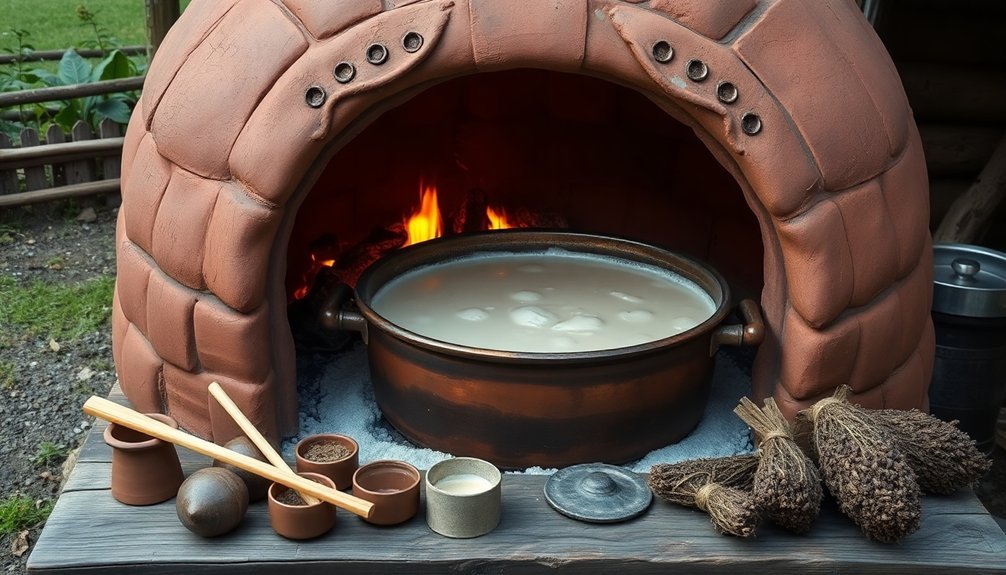For traditional soapmaking, you can build three effective clay furnaces: a simple clay kiln with firebrick lining that maintains 160°F+ temperatures, a wood-fired furnace with chimney that exceeds 200°F for proper saponification, or an insulated clay cauldron system featuring double-walls filled with straw for precise temperature control. Each design uses sustainable materials like clay, sand, and straw while connecting you to ancient soapmaking traditions. The right clay furnace transforms your handcrafted soaps into true artisanal creations.
Building a Simple Clay Kiln for Hot Process Soap Production

While modern soapmaking often relies on electric equipment, a clay kiln offers an eco-friendly and cost-effective alternative for hot process soap production.
You can construct your own kiln using natural clay, sand, and straw to create a structure that withstands the high temperatures needed for saponification.
Ensure your kiln design includes proper insulation to maintain temperatures above 160°F for effective soap cooking.
Don't forget to incorporate a vent or chimney for proper airflow, preventing harmful gas buildup while maintaining combustion.
Line the interior with firebricks to protect against thermal shock and extend your kiln's lifespan.
Regular maintenance is essential—seal any cracks and keep the interior clean to enhance performance and safety during soap production.
With proper care, your clay kiln will serve your soapmaking needs reliably.
Traditional Wood-Fired Clay Furnace Designs for Artisanal Soapmaking

Long before modern electric tools, artisanal soapmakers relied on wood-fired clay furnaces to transform oils and lye into their handcrafted products.
These traditional wood-fired structures achieve temperatures exceeding 200°F, essential for proper saponification and reaching the desired gel phase.
You'll find that locally sourced clay provides excellent insulation and heat distribution for your custom furnace designs.
For ideal results in hot process soapmaking, consider:
- Incorporating a chimney or flue to enhance airflow and maintain consistent temperatures
- Adding a thermal mass of bricks or stones to improve heat retention during longer cooking times
- Exploring "cob oven" styles that combine clay, sand, and straw for enhanced structural integrity
These artisanal soapmaking furnaces connect you to ancient traditions while offering practical benefits for your soap production process.
Insulated Clay Cauldron Systems for Historical Saponification Methods

Since ancient times, insulated clay cauldron systems have enabled soapmakers to achieve the precise temperature control necessary for historical saponification methods.
You'll find these cauldrons particularly effective for maintaining consistent heat during the critical chemical reactions of soap formation.
Construct your cauldron using natural clay materials, which provide excellent insulation properties. For peak efficiency, implement a double-wall structure filled with straw or ash—this design greatly reduces fuel consumption while maintaining steady temperatures throughout the saponification process.
When using traditional soapmaking techniques, place your oils and lye mixture in the cauldron over embers or an open flame. This arrangement allows you to incorporate natural additives like herbs and essential oils easily.
The clay's heat retention qualities guarantee your ingredients transform properly, resulting in high-quality soap that honors historical saponification methods.
Frequently Asked Questions
How Much Bentonite Clay to Add to Soap?
You'll want to add 1-2 teaspoons of bentonite clay per pound of oils in your soap. It's best to mix it with warm oil first before incorporating it into your lye solution for even distribution.
How to Color Cold Process Soap With Clay?
To color cold process soap with clay, mix 2 teaspoons of clay per pound of oils. You'll want to disperse it in warm water first, then add to your soap batter after reaching trace for consistent coloration.
What Is the Best Clay to Put in Soap?
The "best" clay depends on your skin type. Kaolin is gentle for sensitive skin, French green works well for oily skin, Rhassoul offers minerals for nourishment, and Bentonite provides deep detoxification. Try combinations for custom benefits.
How Much Kaolin Clay to Cold Process Soap?
For cold process soap, you'll want to use 1-2 teaspoons of kaolin clay per pound of oils. You can increase to 2 tablespoons for more vibrant color, but always pre-mix it first to avoid clumps.
In Summary
You've now got three powerful DIY clay furnace options for your traditional soapmaking journey. Whether you choose the simple kiln, wood-fired design, or insulated cauldron system, you'll connect with centuries-old techniques while creating uniquely handcrafted soaps. These furnaces don't just produce soap—they honor heritage methods and bring authentic craftsmanship back to your soapmaking process. Try building one this weekend!





Leave a Reply